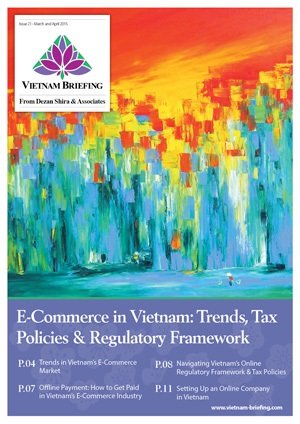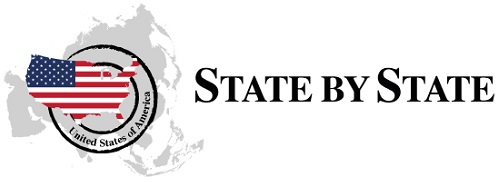State by State: ASEAN and Minnesota Trade
By Charles Small, Andrew Salzman, and Chris Devonshire-Ellis, Dezan Shira & Associates
Known as the “Land of 10,000 Lakes,” Minnesota is the second northernmost state in the U.S. In 2013, the state’s real GDP reached US$312 billion, up 2.8 percent from the previous year and significantly outpacing the 1.9 percent national increase. Major industries in Minnesota include medical devices, biomedical technology, renewable energy, environmental technologies, agribusiness and financial and insurance services.
Trade and Exports
Minnesota’s almost billion-dollar trade surplus with ASEAN is impressive; in 2014, Minnesota’s exports of US$1.77 billion far exceeded imports from the region of US$808.4 million. ASEAN received 8.3% of the state’s total exports in that year. This makes the ASEAN trade bloc – which includes the Southeast Asian nations of Brunei, Cambodia, Indonesia, Laos, Malaysia, Philippines, Singapore, Thailand and Vietnam – a hugely important market for Minnesotan products and export-minded traders.
Minnesota-ASEAN Trade Growing
The main destinations for Minnesota exports in ASEAN are the Philippines, which received US$571.2 million of Minnesota’s exports in 2014, and Singapore, which received US$530.9m. It should be remembered that Singapore is a prime re-export destination, as it contains the world’s second busiest container port by traffic. 32.6 million containers were loaded and unloaded in Singapore in 2013, signifying that Minnesota exports to Singapore are often shipped elsewhere in Asia.
In 2014, Thailand (US$259m), Indonesia (US$171m) and Malaysia (US$151m) also represented significant destinations for Minnesotan exports. From 2013 to 2014, Minnesotan businesses benefited from a significant growth in exports to ASEAN countries. The fastest growth in significant export markets was seen in exports to Indonesia, up 26.0%, Malaysia, up 14.6%, and Singapore, up 7.7%. Top exports were computer/electronic products, machinery, agricultural products, food/kindred products, and paper products.
The majority of Minnesota’s imports in 2014 came from ASEAN come from Malaysia (US$235.7m), Thailand (US$172.1m) and Vietnam (US$156.8m).
The Trans-Pacific Partnership (TPP) agreement, currently doing the rounds in Washington DC, could be a big deal for Minnesota-ASEAN trade. The TPP has the potential to increase Minnesota exports substantially. Two high tariffs which would be eliminated by the TPP are Malaysia’s tax on iron and steel structures (up to 25%), and Vietnam’s duty of self-adhesive plastic and tape rolls, which is currently 17%.
![]() RELATED: State by State: China and Minnesota
RELATED: State by State: China and Minnesota
Investment Opportunities
There is something for every company in ASEAN –perhaps the most economically diverse regional grouping in the world.
Singapore’s dynamic economy is a typical base for holding companies in ASEAN due to its strategic location and welcoming tax rates. Additionally, as a market for Minnesota’s exports, its high-income residents have a GDP per capita around 10 percent higher than residents of Minnesota.
Like several ASEAN countries itself, electronic integrated circuits and micro-assemblies are a leading part of Minnesota’s exports, and the value of such products exported from the state shot up 11 percent over 2013-14. Malaysia’s electrical and electronics industry should be on the radar of Minnesota businesses. The Malaysian Investment Development Authority sees the semiconductor sector as spearheading growth. Exports of semiconductor devices in 2013 made up 47 percent of Malaysia’s total electrical and electronics exports. As a key part of the global supply chain, Malaysia is a location for Minnesota firms to consider in great depth.
ASEAN also presents an opportunity for Minnesota’s healthcare industry. As economic development leaves the food shortages of decades past as memories, the demographic landscape is set to be altered over coming years.
![]() RELATED: Dezan Shira & Associates’ Pre-Investment and Entry Strategy Advisory
RELATED: Dezan Shira & Associates’ Pre-Investment and Entry Strategy Advisory
Tailoring your healthcare products and services to suit ASEAN’s diverse market is an absolute necessity. This is especially apparent when considering age demographics. According to the World Bank, life expectancy at birth in Singapore in 2013 was 82 years, equivalent to that of Australia. Looking at Myanmar in 2013, life expectancy was 65 years, equivalent to the USA in the early 1940’s. Myanmar’s development trajectory appears set to follow others in the region, led by labor-intensive industries.
Meanwhile, Vietnam is a prime market for investment. In particular, the Vietnamese market presents a rewarding opportunity for foreign businesses in retail; around 40 percent of the 700 supermarkets in the country were a part of a foreign group by the end of 2012. Now, as World Trade Organization obligations have required Vietnam to permit establishment of wholly foreign owned retail businesses since January 2015, retailers should take advantage of this rapidly growing market. For online retailers, businesses should be sure to take expert advice, as Vietnam’s e-commerce market presents unique challenges for both domestic and foreign retailers.
![]() RELATED: State by State: Vietnam and Minnesota
RELATED: State by State: Vietnam and Minnesota
Free Trade
American companies can take advantage of ASEAN’s free trade agreements with both China and India. Signed off in 2010, these FTA have reduced tariffs on 97% of all traded products between ASEAN and China, and ASEAN and India, to zero. American companies, via establishing a subsidiary in ASEAN can have that local entity purely by its geographical location, qualify as an ASEAN company and accordingly access these FTA benefits. Rules of Origin apply, and generally require 40% ASEAN components in the mix, allowing US parts to also be included prior to duty free export either across ASEAN or to China and India. Using ASEAN as a base to further penetrate Asian markets and reduce China manufacturing costs is now becoming a trend.
The United States has a Free Trade Agreement with Singapore, which contains tariff reduction provisions for trade in goods and services, and the tax treatment of American nationals employed in Singapore. The United States has signed Double Tax Treaties with Indonesia, Malaysia, Philippines, Singapore, Thailand and employs Most Favored Nation status upon Vietnam. These can reduce profits tax burdens under certain circumstances in both trade and any ASEAN legal establishment. Please seek professional advice for specific ASEAN investment requirements.
ASEAN in Minnesota
There is a minimal presence of ASEAN-based companies in Minnesota, mostly in the St Pauls area. Minnesota Department of Employment and Economic Development records show that there are two Philippines-based companies, one Thai and one Singaporean. Two of these companies are involved in computer and electronics manufacturing, one in advertising, and one in consulting and professional services.
![]() RELATED: State by State: India and Minnesota
RELATED: State by State: India and Minnesota
The Minnesota Trade Office also has a desk specialising in South-East Asia.
Further Support from Dezan Shira & Associates
Dezan Shira & Associates can service Minnesota-based companies that are looking to further develop their operation in ASEAN. The firm can help companies establish a direct office in the country and can guide them through the affiliated tax, legal and HR issues that come with doing so. To arrange a free consultation, please contact our U.S. office at usa@dezshira.com.
|
Asia Briefing Ltd. is a subsidiary of Dezan Shira & Associates. Dezan Shira is a specialist foreign direct investment practice, providing corporate establishment, business advisory, tax advisory and compliance, accounting, payroll, due diligence and financial review services to multinationals investing in China, Hong Kong, India, Vietnam, Singapore and the rest of ASEAN. For further information, please email asean@dezshira.com or visit www.dezshira.com. Stay up to date with the latest business and investment trends in Asia by subscribing to our complimentary update service featuring news, commentary and regulatory insight. |
 The Asia Sourcing Guide 2015
The Asia Sourcing Guide 2015
In this issue of Asia Briefing, we explain how and why the Asian sourcing market is changing, compare wage overheads, and look at where certain types of products are being manufactured and exported. We discuss the impact of ASEAN’s Free Trade Agreements with China and India, and highlight the options available for establishing a sourcing and quality control model in three locations: Vietnam, China, and India. Finally, we examine the differences in quality control in each of these markets.
The 2015 Asia Tax Comparator
In this issue, we compare and contrast the most relevant tax laws applicable for businesses with a presence in Asia. We analyze the different tax rates of 13 jurisdictions in the region, including India, China, Hong Kong, and the 10 member states of ASEAN. We also take a look at some of the most important compliance issues that businesses should be aware of, and conclude by discussing some of the most important tax and finance concerns companies will face when entering Asia.
 E-Commerce in Vietnam: Trends, Tax Policies & Regulatory Framework
E-Commerce in Vietnam: Trends, Tax Policies & Regulatory Framework
In this issue of Vietnam Briefing Magazine, we provide readers with a complete understanding of Vietnam’s e-commerce industry. We begin by highlighting existing trends in the market, paying special attention to scope for foreign investment. We look at means for online sellers to receive payment in Vietnam, examine the industry’s tax and regulatory framework, and discuss how a foreign retailer can actually establish an online company in Vietnam.









